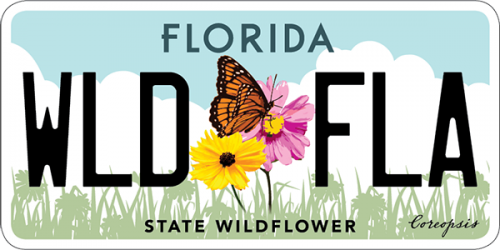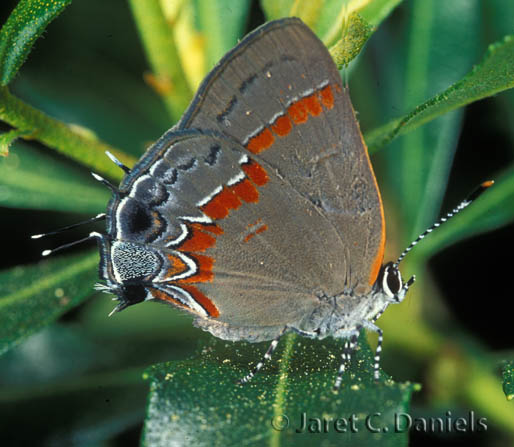- Family name: Lycaenidae/Gossamer Wings
- General description: Male dark gray; female dark gray with blue scaling toward wing bases. Ventral hindwing light gray with two short tails, a broad irregular median red band edged outwardly in white, a blue marginal patch and two black marginal spots.
- Field Marks: small; ventral hindwing with broad median red band and short tails
- Sexes: appear similar
- Wingspan: 19-27 mm
- Life Cycle: Egg: white, flattened, laid singly on dead leaves Mature larva: pinkish-brown Chrysalis: mottled brown
- Number of Generations: multiple
- Flight Season: All year
- Abundance: Common
- Habitat: old fields, woodlands, forest margins, shrubby sites, parks
- Larval Host Plants: dead leaf litter; often in association with wax myrtle (Myrica cerifera), smooth sumac (Rhus copallina), Brazilian pepper (Schinus terebinthifolius)
- Similar Species:
- Additional Information: Only Florida butterfly to utilize detritus as larval food
- Range in Florida
 The Florida Wildflowers & Butterflies projects at the Florida Museum are sponsored in part by the State of Florida and the Florida Wildflower Foundation, Inc.
The Florida Wildflowers & Butterflies projects at the Florida Museum are sponsored in part by the State of Florida and the Florida Wildflower Foundation, Inc.
